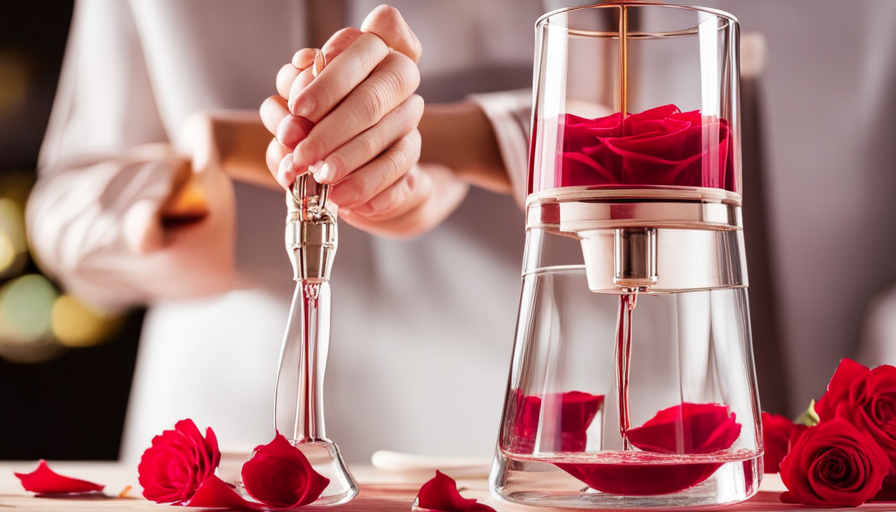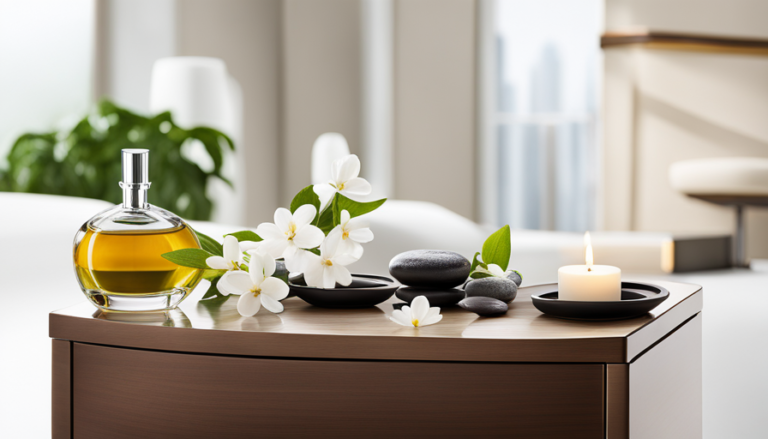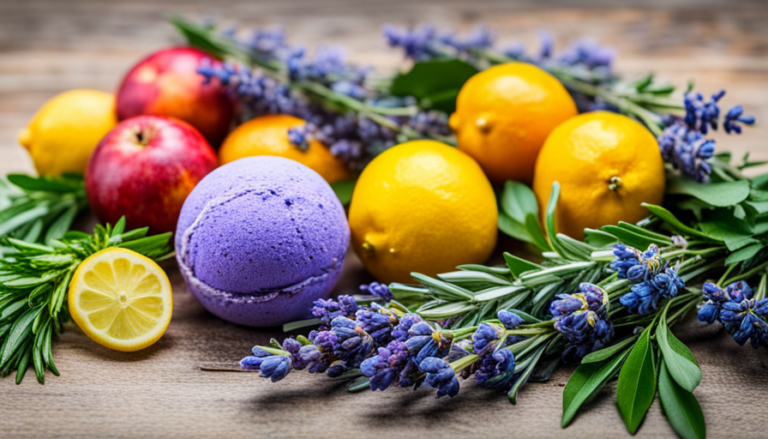Diy Rose Essential Oil

Are you ready to indulge in the luxurious scent of roses from the comfort of your own home? Look no further than this DIY rose essential oil guide.
With just a few simple ingredients and supplies, you’ll be able to create your very own aromatic masterpiece.
Get ready to immerse yourself in the benefits of rose essential oil, from its calming properties to its skin-nourishing effects.
Say goodbye to store-bought oils and hello to a personalized touch of elegance with this easy-to-follow process.
Key Takeaways
- Choose fresh or dried rose petals for making DIY rose essential oil.
- Infuse the rose petals with a carrier oil like almond or jojoba oil through cold or heat infusion methods.
- Strain the infused oil to separate any solid particles and store it in a dark glass bottle.
- Rose essential oil has various skincare benefits, can be incorporated into daily routines, and used for aromatherapy and relaxation techniques.
Gather the Ingredients and Supplies
Now, you’ll need to gather all of the necessary ingredients and supplies to create your own DIY rose essential oil.
When it comes to choosing rose petals, you have the option of using either fresh or dried petals. Fresh petals are ideal if you have access to a garden or can find them at a local flower shop. Dried petals, on the other hand, are more convenient and can be easily purchased online or at specialty stores.
In terms of oils for infusion, there are various options such as almond oil, jojoba oil, or even olive oil. Each type of oil brings its own unique benefits and characteristics to the final product.
Once you’ve gathered everything you need, it’s time to prepare the rose petals for extraction in the next section about ‘preparing the rose petals’.
Prepare the Rose Petals
First, gather your rose petals. You will need a generous amount of fresh rose petals to make DIY rose essential oil. These petals can be obtained from your own garden or purchased from a local florist. Ensure that the roses are pesticide-free and have a strong fragrance for the best results.
To prepare the rose petals, gently remove them from the stems and discard any damaged or wilted ones. Rinse the petals under cold water to remove any dirt or debris. Pat them dry with a clean towel.
Once dried, you can use these rose petals in various ways. They can be steeped in hot water to make a fragrant and soothing rose petal tea, or they can be added to homemade bath bombs for a luxurious and relaxing experience.
Now that your rose petals are ready, it’s time to move on to infusing the oil.
Infuse the Oil
To infuse the oil, you’ll need to gather all the necessary ingredients and equipment. There are different methods to infuse rose petals into oil, each with its own advantages. One common method is the cold infusion method, where you combine dried rose petals with a carrier oil in a clean glass jar and let it sit for several weeks.
Another method is heat infusion, which involves gently heating the mixture of rose petals and carrier oil on low heat for a short period of time. Whichever method you choose, make sure to use high-quality carrier oils like jojoba or almond oil to maximize the fragrance and benefits of your homemade rose essential oil.
Remember, patience is key when infusing oils as it takes time for the scent and properties of the roses to merge with the carrier oil. Once infused, strain and store the aromatic oil in a dark glass bottle for future use.
To strain and store the infused rose essential oil that you have created, you will need some additional materials.
Strain and Store the Oil
Once you have completed the infusion process, strain the oil and transfer it into a dark glass bottle for storage. This step is crucial to remove any leftover plant material and ensure the purity of your rose essential oil.
To strain the oil, you can use a cheesecloth or a fine-mesh strainer. Gently pour the infused oil through the strainer, allowing it to separate from any solid particles. Once strained, carefully transfer the oil into a dark glass bottle with a tight-fitting cap. Dark glass helps protect the oil from sunlight exposure, preserving its potency and aroma.
Now that your rose essential oil is properly stored, you can enjoy its numerous benefits. Rose essential oil has various uses such as aromatherapy, skincare, and relaxation techniques. It can be added to diffusers, bathwater, or carrier oils for massage purposes. Incorporating rose essential oil into your routine can promote emotional well-being and enhance physical health.
Transition: Now that you know how to strain and store your homemade rose essential oil properly let’s move on to learning how to enjoy its wonderful benefits in different ways.
Enjoy the Benefits of Rose Essential Oil
Now that you know how to strain and store your homemade rose essential oil properly, it’s time to explore the various ways you can enjoy its wonderful benefits. Rose essential oil offers numerous benefits for your skin, making it a valuable addition to your skincare routine. It has anti-inflammatory properties that help calm and soothe irritated skin, making it ideal for those with sensitive or acne-prone skin. Additionally, rose essential oil is known for its moisturizing and hydrating effects, helping to improve the overall texture and appearance of your skin.
To incorporate rose essential oil into your daily routine, consider adding a few drops to your moisturizer or facial oil for added hydration. You can also mix it with a carrier oil like jojoba or almond oil and use it as a massage oil for a relaxing self-care session. Another option is to create a DIY facial mist by combining rose essential oil with distilled water in a spray bottle – simply spritz onto your face throughout the day for a refreshing pick-me-up.
Incorporating rose essential oil into your skincare routine can provide you with numerous benefits, from soothing inflammation to improving hydration levels. Experiment with different methods of application and find what works best for you. Remember to always dilute the essential oil properly and perform a patch test before applying it directly on your skin.
| Skincare Benefits | Daily Routine Ideas |
|---|---|
| Soothes Irritated Skin | Add a few drops to moisturizer |
| Moisturizes and Hydrates | Use as massage oil |
| Improves Texture | Create DIY facial mist |
Conclusion
So there you have it, your very own DIY rose essential oil. Who needs to spend money on expensive store-bought oils when you can make your own?
It’s a simple process that anyone can do, and the results are truly amazing. And just think, while you’re enjoying the benefits of this luxurious oil, you can revel in the irony that you made it yourself.
So go ahead, indulge in some self-care and enjoy the sweet scent of success with your homemade rose essential oil.






